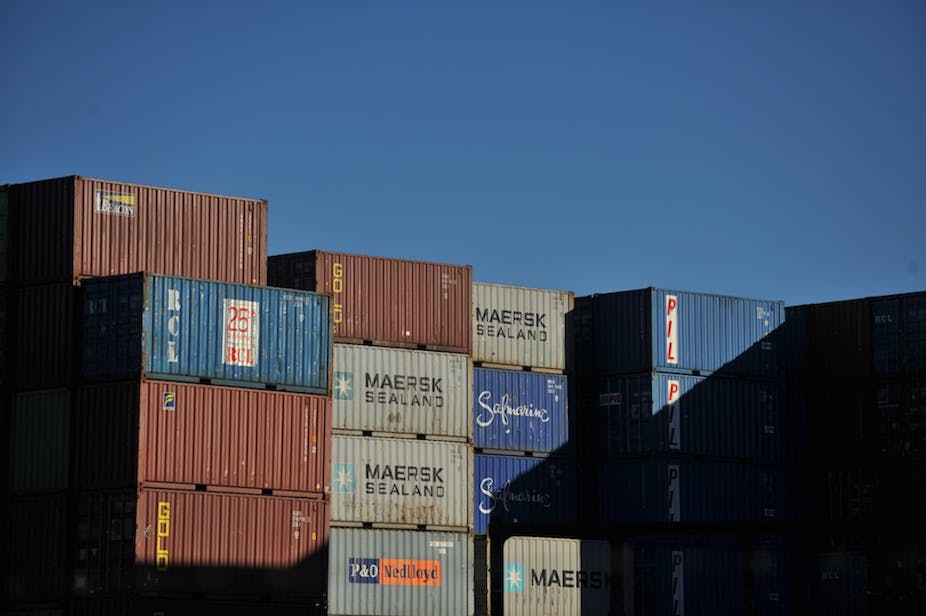The arrival of Hutchison Port Holdings Australia as a third stevedore onto Australia’s waterfront is designed to provide increased competition but raises the vexed issue of whether three may be too many.
HPH will begin operating from its $250 million Brisbane facility in early 2013 and Sydney early 2014.
At the same time, the Port of Melbourne Corporation (PoMC) aims to have a third operator commence operations in 2016 as part of its new terminal development at Webb Dock.
The increased competition comes at the same time as incumbent stevedores Patrick (owned by Asciano) and DP World Australia announced they are introducing new technology and equipment that will increase the capacity at their container terminals.
Historically there have been a large number of stevedores operating in Australia. However since the introduction of containers (in the late 1960s) the stevedoring business has become more capital intensive, due to the need for dedicated and expensive equipment, resulting in a consolidation into just two stevedores (the incumbents, albeit under different names and ownership) in the late 1990s /early 2000s.
The Maritime Union of Australia (MUA) under the leadership of national secretary Paddy Crumlin has been opposed to the introduction of a third stevedore. Crumlin has been quoted as saying that they prefer the status quo to remain as the union is not convinced that the economic argument for a third stevedore stands up. On the other hand, the MUA has been dealing with HPH, which has been prepared to employ their members.
Annual container growth rates have been 6% to 7 % over the years. However, they seemed to have slowed recently (certainly on the eastern seaboard) reflecting the current state of the Australian economy and the high Australian dollar.
Port of Brisbane CEO Russell Smith commented recently on the viability of three stevedores at the Port of Brisbane given the total throughput is just over one million TEUs. It is generally accepted that to have a viable modern container terminal operation in an OECD country, volumes upwards of 500,000 TEUs are required.
In June 2012 Asciano’s CEO John Mullen indicated that having three competitive stevedores in Australia is unlikely to work in the long run. If you consider the large capital investment that is required upfront (before one revenue-earning container is lifted) you will need to take a very long-term view.
For instance, HPH Australia will not get much change out of $250 million for their terminal set up costs at Fisherman Islands in Brisbane. At the same time DP World in Brisbane is resurfacing Berth 7 to prepare for the introduction of Automated Stacking Cranes (which will increase their capacity but comes at a substantial cost) and Patrick has already spent a large amount of money in automating its terminal in Brisbane.
The situation in Sydney is similar with HPH again required to invest a large amount of money upfront for the set-up of their new terminal at Port Botany (as well as the Intermodal Logistics Centre at Enfield) and Patrick announcing that they will be investing up to $350 Million over the next three years in automating and expanding their Port Botany terminal.
Admittedly the total Sydney container throughput volume is twice that at the Port of Brisbane, but still not large by international standards and not growing as fast as previously forecasted.
In the meantime the shareholders and Chief Financial Officers of HPH, Asciano and Citi Infrastructure Investors (75% owners of DP World Australia) are demanding a reasonable return on investment.
Could the impact of this be that in the not too distant future we will see another consolidation of container operators in Australia with a rationalisation of terminal developments? The Australian Competition and Consumer Commission (ACCC) certainly hopes not given their long held view that there is not enough competition on the Australian waterfront and the current operators are making too much money.
Or will there be a reversal of roles? A decade or so ago HPH put in a bid for Chris Corrigan’s Patrick Corporation (which Mr Corrigan rejected as being too low). Will QUBE Holdings (of which Mr Corrigan is chairman) now put in a bid for HPH Australia or even DP World Australia or the Patrick Terminals and Logistics division?
Only time will tell.
Peter van Duyn
Maritime Logistics Expert at the Institute for Supply Chain and Logistics at Victoria University

